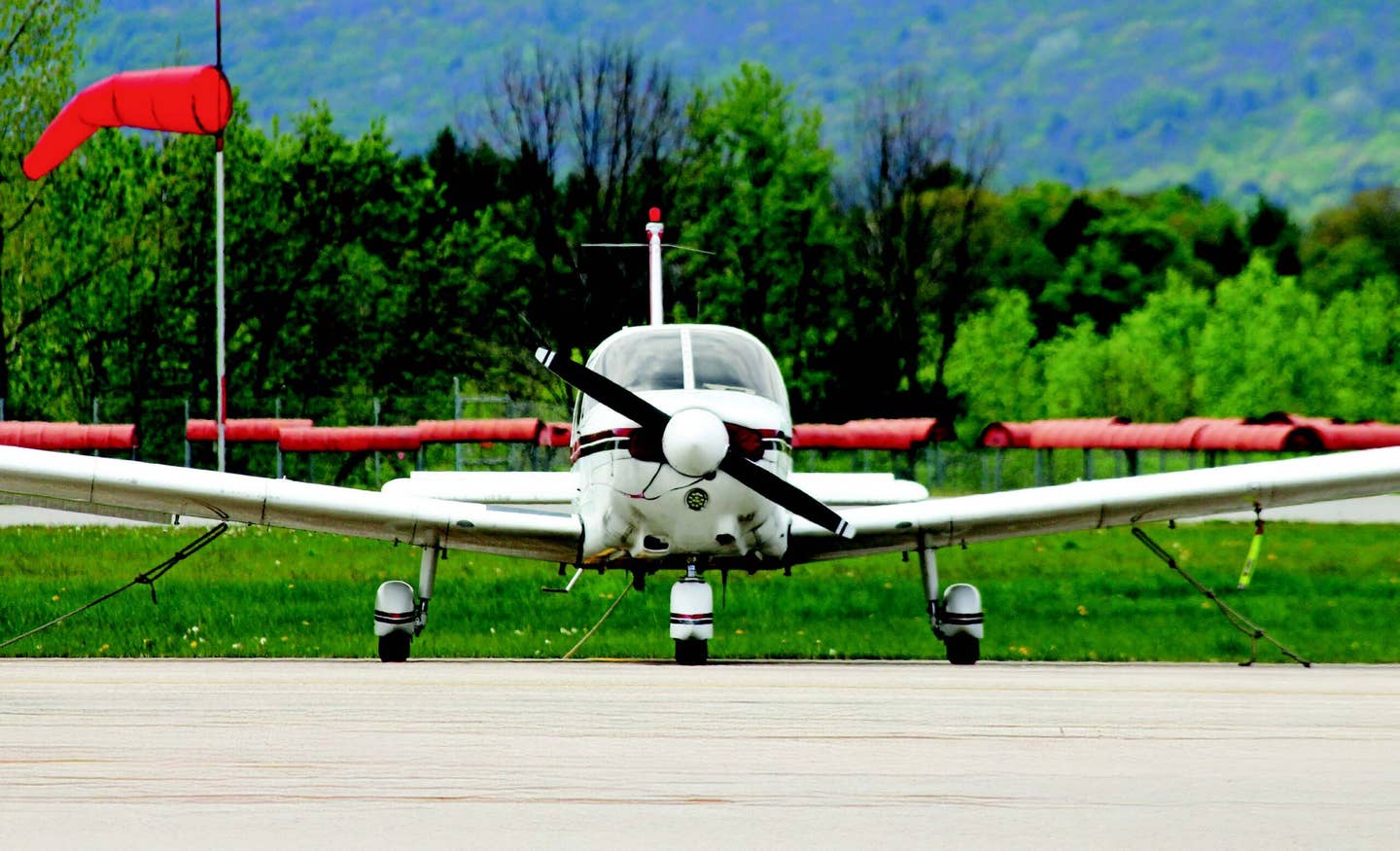Pilots Need to Follow Instructions
The learner’s unwillingness or inability to follow instructions can carry into the airplane.

A learner’s unwillingness or inability to follow instructions can carry into the airplane.
[Courtesy: Meg Godlewski]
"Write this down," said the instructor of the private pilot ground school, writing the FAA’s five hazardous attitudes on the classroom white board. "We're about to talk about these."
There were six learners in the class. Five of them followed the instructions. No. 6, a 17-year-old boy ignored the instructions and instead took out his smartphone to take a picture of the board.
"The instructions are to write it down," said the CFI.
"This is easier," he said with a grin.
"The instructions were to write them down," the CFI politely but sternly repeated, "please write them down."
"This is easier," the learner repeated—still grinning. It didn’t take long for him to fall behind in the class.
The learner’s unwillingness or inability to follow instructions carried into the airplane. He didn't listen to his instructors—there were four who tried to teach him. His failure to adjust power and trim when told to do so, to look before doing clearing turns, to use the checklist and the big Kahuna, to hold short of the runway for landing traffic made him “The Learner No One Wants To Fly With.” The final straw was when the self-proclaimed time builder who flew seven days a week trying to reach 1,500 hours total time before his 23rd birthday, refused to fly with him. The learner was asked to leave. As far as I know, the teen never became a pilot for one simple reason: he simply could not or would not follow instructions. Don't be like this guy.
Why People Fail To Follow Instructions
The failure to follow instructions is multifaceted and non-gender specific. Perhaps instructions are ignored because a learner is looking for an easier route—such as taking a photo of the information on the board or using a search engine to get the answers for a test.
Or perhaps the instructions are not clear. This falls on the CFI. Clarity and even over-explanation can be helpful. For example, using "this is a closed-book test" versus "this is an open-book test, and please cite where you obtained your information. Internet search engines and the phrase 'my instructor told me' are unacceptable."
The most common learner misstep is failing to do the required reading before a flight lesson. If you are this pilot, you are short-changing yourself. If the CFI instructs you to read or study something before the flight, it is necessary to prepare you for the flight.
If you don't do the pre-reading, there is the chance the preflight briefing will take longer as the CFI will have to slow-walk you through a concept—and that means less time in the air. Another option is that you make the flight and you are little better than a passenger because you don't understand what is happening and why. And of course, the lesson may then become all review—such as takeoffs and landings, rather than introducing new material. The more time spent reviewing, the more time and expense it will take to achieve your certification.
The more savvy CFIs will ask the unprepared learners why their instructions were not followed. Was the CFI unclear on communicating expectations? Did the learner not have the time to accomplish the task? One the CFI can fix, the other one, not so much—with the exception of reducing the amount of new material introduced in each lesson.
Some learners are easily overwhelmed when they are given instructions. This can manifest in hostility, especially when the learner does not know how to accomplish the task—or if the learner does not see the value of the task. They may become resentful and frustrated.
Sometimes this is brought on by half-truths and incorrect tribal knowledge, like the learner who swore up and down that they didn't need to know how to read airspace on a sectional because their airline pilot father claimed “everyone uses ForeFlight now." It was somewhat amusing to see the expression on the learner’s face upon realizing the e-version of a sectional on the iPad was indeed the same airspace that appears on the paper sectional.
Instructions given in the air, be they from ATC or the instructor, are often given in the name of safety. The learner who fails to change power when told or doesn't do clearing turns as instructed or argues with ATC when told to climb, descend or turn, or who tries to bully the instructor into allowing them to solo when they lack the skills or knowledge will likely lose their renter privileges and their CFI in one shot.
If the flight lesson is more foundational, such as the learner’s first cross-country flight and they did not complete a navigation log, there are some instructors who will cancel the flight and turn it into a ground session until the NavLog is completed. Others might allow the flight to take place, trying to salvage some teachable moment out of the experience, such as teaching pilotage and dead reckoning, or simply do the flight to get the time and check the experience box. The learner may not learn anything on the flight, but they will have logged a cross country.
The dangerous part of this “check-the-box” mentality is that if that learner becomes a flight instructor—and so many do to build experience for the airlines—they will take that same “check-the-box” mentality with them. The pilots they train will be trained to a "check-the-boxes" level and may not learn the skills or the knowledge required. You probably know a pilot who has had a lesson like this—they felt lost and behind the airplane, and at the end of the flight, they didn't feel as if they learned much of anything.
Face-to-Face Versus Screen-to-Screen
If we learned anything during the COVID-19 pandemic, it was that it is possible to teach and learn remotely; however, there are some things that are best done face to face over a table. It can be very challenging for the instructor to “read” the learner's progress via a screen.
Lately I have been teaching a lot of cross-country flight planning with an emphasis on obtaining a weather briefing, creating a navigational log, and determining aircraft performance. Many of the learners I have been working with did ground school remotely, and they needed some help with the nav log and aircraft performance, but that wasn't possible with the remote set up. There are a lot of boxes on that nav log form—and where to put the information can be challenging.
One said the instructor told the class not to worry, as everyone did flight planning with an app these days. I have no problem with a pilot using an app after acquiring their certificate, but for the check ride, at least, they need to demonstrate the ability to utilize a paper nav log and be able to explain how they selected their route and determined aircraft performance.
We started the process with a telephone call to 1-800-WX-BRIEF— weather apps are great, but if your smartphone or tablet dies, you better know how to make a telephone call and what to ask the briefer. One learner who had completed all the requirements for the private pilot check ride before coming to me said he had never called 1-800-WX-BRIEF before as he was told “nobody does that anymore.”
Please. I submit the ability to get a telephone weather briefing is like knowing how to drive a stick-shift; it is a good skill to have.
Information was gathered, the paper sectional was pulled out, and the route was planned with pencil and plotter. The aircraft POH and E6B were utilized and performance was determined. All in all, it took about an hour and 15 minutes for the first cross-country flight to be planned. The second one went together in 45 minutes—that's the beauty of learning, the more you practice something, the more efficient you become at the task.
Let the CFI Teach You
Some learners are almost reticent to say they don't know how to do something—or they have forgotten how to do something. You are paying the CFI to teach you—not sandbag the right seat while you flail around like a landed salmon, so please let us earn our money—and let learning take place.

Sign-up for newsletters & special offers!
Get the latest FLYING stories & special offers delivered directly to your inbox






